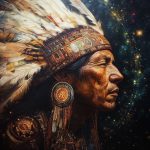Filters
Available Artwork
Other styles of paintings you may like
Origins of Modern Painting:
Modern art, which emerged between the late 19th and early 20th centuries, began as an art movement that challenged traditional academic standards and styles, shifting more towards an abstract and experimental approach and seeking new ways to represent the world. Modern art encompasses a diverse range of movements, theories, and attitudes. This period marked a departure from the detailed realism of earlier art, embracing innovation and experimentation. Art movements and styles like Impressionism, Expressionism, Cubism, Fauvism, Dadaism, Surrealism, Pop art, Minimalism and more arose from the 1890s itself as the core of modern art and one of the high points of Western Visual culture.
Although Modern is said to have emerged in the late 19th century, its roots can be traced back to earlier periods. Francisco Goya is often regarded as the father of Modern painting despite not being a Modernist painter himself. And a pivotal moment in the birth of modern art was the 1863 exhibition of Édouard Manet's "Le Déjeuner sur l'herbe" at the Salon des Refusés in Paris.
Post-impressionist painters, including Vincent van Gogh, Pablo Picasso, Henri Matisse, Claude Monet, Paul Cézanne, Paul Gauguin, and Georges Seurat, marked the beginning of Modern Art. These artists influenced the development of Modern Art. Moreover, famous modern art artists like Monet and Van Gogh helped push the influence of abstraction beyond realism. Moreover, Cubism was the first modern art movement to show a shift from traditional painting techniques, with an emphasis on abstract compositions and geometric forms. Its pioneers, like Pablo Picasso and Georges Braque, deconstructed objects into abstract geometric shapes. Some of the most famous modern paintings include "Guernica" by Pablo Picasso, "Nighthawks" by Edward Hopper, "The Starry Night" by Vincent van Gogh, and others.
The 1913 Armory Show, also known as the International Exhibition of Modern Art, was organised by the Association of American Painters and Sculptors. This exhibition was one of the largest Modern Art exhibitions in America. The show became a pivotal event in the history of American art, introducing Americans, who were accustomed to realistic art, to the experimental styles of the European avant-garde, including Fauvism and Cubism. The show catalysed American artists, who became more independent and created their own "artistic language". Featuring works by European artists such as Marcel Duchamp and Henri Matisse, the exhibition introduced audiences to radical new styles and concepts, significantly influencing the American art scene.
Modern art continued to evolve throughout the 20th century. Each movement reflects the artists' responses to their contemporary cultural, political, and social contexts, continually redefining the boundaries of art.








